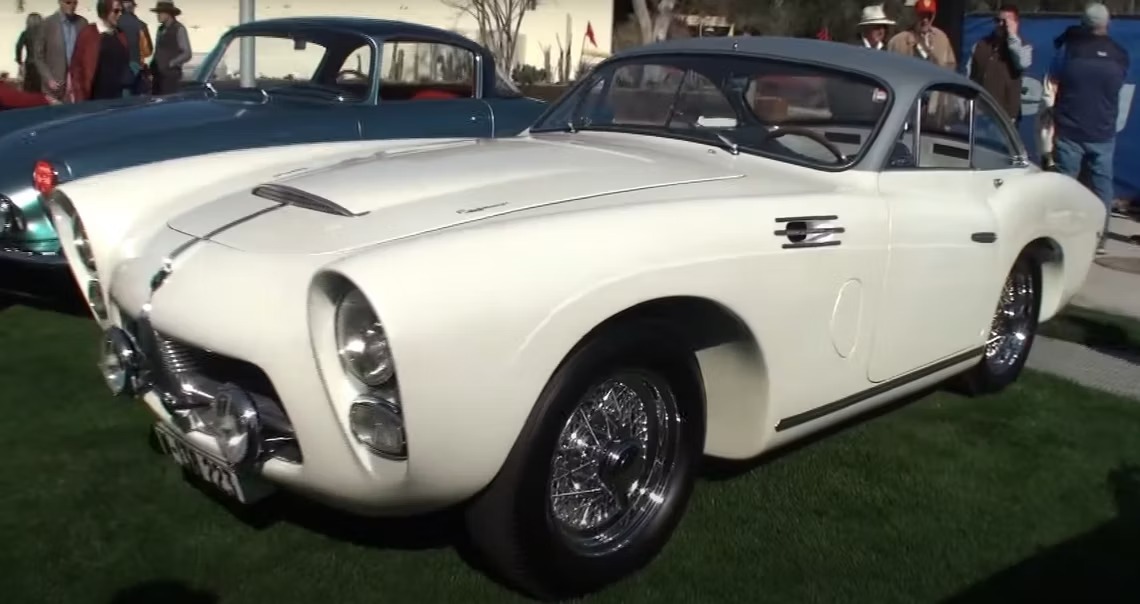Lou Costabile finds a rare Pegaso, aka the Flying Horse, that was gunning for the prancing horse brand during its heyday.

When you think of Spain, you might think of sun, tapas, and great beaches—and probably not sports cars. However, the Spanish-built Pegaso Z102 had the reputation of being the fastest production car made in 1953. With this elegant and ingeniously-made “Flying Horse”, Spain threw down the challenge to Ferrari for a short time in the 1950s.
At the Arizona Concours d’Elegance in Scottsdale, car enthusiast and YouTuber Lou Costabile shares what he learns about a striking 1954 Pegaso Z102 Berlinetta Series II.
Say Hola To The Spanish Ferrari
There’s just one reason why this sophisticated, all-aluminum Pegaso exists at all. Its designer, Spanish engineer Wilfredo Ricart, wanted to compete directly with Ferrari. Before World War II, Ricart had worked alongside Enzo Ferrari at Alfa Romeo. When Ricart returned to Spain after the war, the government-run automaker Enasa hired him to develop a luxury sports car.

The outcome was the Pegaso Z102, often nicknamed the Spanish Ferrari. Ricart took inspiration from the mythical flying horse, Pegasus, for its name. And fly it could, since its top speed was 150 mph. By comparison, the top speed of the 1953 Ferrari 250 Europa GT was only 140 mph.
At the Arizona Concours, a DOHC 3.2-liter V8 making 360 hp powers owner Chip Fudge’s Pegaso Z102. Its dry-sump system was innovative at the time, since mostly race cars and speedboats incorporated it to maximize performance. Other innovations include a 5-speed manual transmission and a rear-mounted transaxle for better weight distribution, both of which only racers like the Ferrari 250 Testa Rossa used back then.
Outrageous Styling Makes This Pegaso Z102 Memorable
Although the Pegaso Z102 was technologically advanced for its time, its looks are what most people notice these days. Chip Fudge’s Flying Horse is particularly distinctive, as its design comes from flamboyant French coachbuilder, Jacques Saoutchik.
The 2+2 car has dramatic body lines, unusually recessed headlights and taillights, and interior Bakelite components. Saoutchik built only 16 coupes like Fudge’s, out of the 68 cars that Pegaso produced from 1951 to 1958.
Buying a car named after the mythical flying horse holds special meaning for Chip Fudge. He’s honoring his now-deceased father, who worked for Mobil Oil. Interestingly enough, the logo for Mobil was, of course, a Pegasus. Unfortunately, his father never saw this rare Pegaso but a classic car this unique and innovative is certainly a fitting tribute.
Source: Road And Track, YouTube @ Lou Costabile









